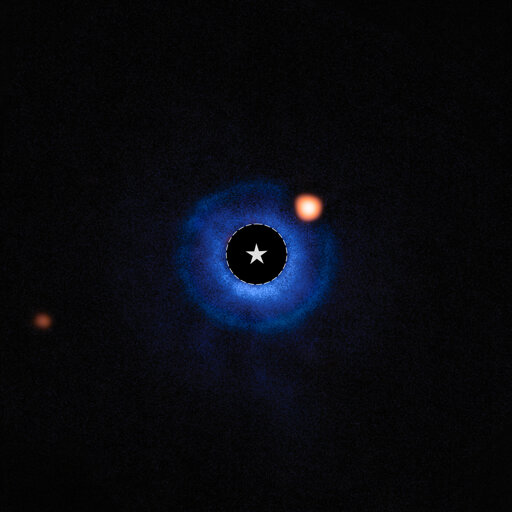Initial analysis suggests that the object – referred to as TWA 7b – could be a young, cold planet with a mass around 0.3 times that of Jupiter (~100 Earth masses) and a temperature near 320 Kelvin (roughly 47 degrees Celsius). Its location aligns with a gap in the disc, hinting at a dynamic interaction between the planet and its surroundings.
Debris discs filled with dust and rocky material are found around both young and older stars, although they are more easily detected around younger stars as they are brighter. They often feature visible rings or gaps, thought to be created by planets that have formed around the star, but such a planet has yet to be detected within a debris disc.
Once verified, this discovery would mark the first time a planet has been directly associated with sculpting a debris disc and could offer the first observational hint of a trojan disc – a collection of dust trapped in the planet’s orbit.
TWA 7, also known as CE Antilae, is a young (~6.4 million years old) M-type star located about 111 light-years away in the TW Hydrae association. Its nearly face-on disc made it an ideal target for Webb’s high-sensitivity mid-infrared observations.



